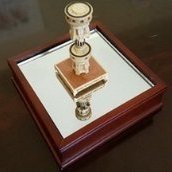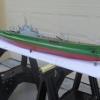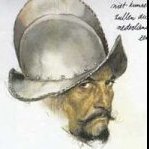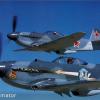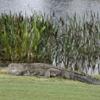MORE HANDBOOKS ARE ON THEIR WAY! We will let you know when they get here.
×
-
Posts
3,867 -
Joined
-
Last visited
Reputation Activity
-
 KeithAug reacted to kees de mol in Pelikaan 1999 by kees de mol - FINISHED - scale 1/75 - Dutch Beamtrawler
KeithAug reacted to kees de mol in Pelikaan 1999 by kees de mol - FINISHED - scale 1/75 - Dutch Beamtrawler
Hello people from MSW
After some radiosilence I hope to continue this buildingreport. I can't promise updates every week but my goal is to start building again in a slow but steady pase.
After my time in hospital I had no energy to do anything and the models were collecting dust and so did the hobbyroom. So when I found some motivation again to do anything I dicided to clean the room first but that got out of hand a little. Because my medical conditions I had to work very slow and it took me lots of time to do everything but last weeks I finished 'cleaning'. All the tools have their own place now in the new toolcabinet I made and instead of heaps of tools and bulks of junk I have now a beautifull new workplace for the heavier jobs. Also the 'gates of the cave' got a re-styling with some nautical objects I collected over the years and I created more space in the hobbyroom by replacing a big wooden desk for a smaller cabinet on wheels (for the lathe).
-
 KeithAug got a reaction from WackoWolf in Byrnes Table Saw
KeithAug got a reaction from WackoWolf in Byrnes Table Saw
Hi Guys
You might want to look here also http://modelshipworld.com/index.php/topic/10830-how-would-you-improve-your-byrnes-tools/?p=327942
-
 KeithAug got a reaction from Nirvana in Byrnes Table Saw
KeithAug got a reaction from Nirvana in Byrnes Table Saw
Hi Guys
You might want to look here also http://modelshipworld.com/index.php/topic/10830-how-would-you-improve-your-byrnes-tools/?p=327942
-
 KeithAug reacted to Mirabell61 in SS Kaiser Wilhelm der Grosse 1897 by Mirabell61 - FINISHED - scale 1:144 - POF - first German four stacker of the Norddeutscher Lloyd line
KeithAug reacted to Mirabell61 in SS Kaiser Wilhelm der Grosse 1897 by Mirabell61 - FINISHED - scale 1:144 - POF - first German four stacker of the Norddeutscher Lloyd line
Update...
here 2 of the 6 swan-neck hydrants that go to the promenade-deck, just inside of the railing...
Made from anealed 2 mm brass wire, bent and solder-fitted with sleeve and flange..., they will be painted red
Nils
-
 KeithAug got a reaction from Eddie in Endeavour 1934 by Julie Mo - Amati - Scale 1:35 - America's Cup UK J-Class Challenger
KeithAug got a reaction from Eddie in Endeavour 1934 by Julie Mo - Amati - Scale 1:35 - America's Cup UK J-Class Challenger
Julie
That seems to have worked out pretty well. Well done.
-
 KeithAug got a reaction from Piet in SS Kaiser Wilhelm der Grosse 1897 by Mirabell61 - FINISHED - scale 1:144 - POF - first German four stacker of the Norddeutscher Lloyd line
KeithAug got a reaction from Piet in SS Kaiser Wilhelm der Grosse 1897 by Mirabell61 - FINISHED - scale 1:144 - POF - first German four stacker of the Norddeutscher Lloyd line
Hi Nils
Re vents for post WW1 liners. I have seen then made using a shaped plug which is pressed into a circular die. The vents are usually made from copper with many annealing steps to avoid work hardening and splitting. The tubes are than soldered on and the hole is cut from the inside of the tube. I am planning to have a go at this method later on in my current build....... just for the experience!
-
 KeithAug got a reaction from mtaylor in Endeavour 1934 by Julie Mo - Amati - Scale 1:35 - America's Cup UK J-Class Challenger
KeithAug got a reaction from mtaylor in Endeavour 1934 by Julie Mo - Amati - Scale 1:35 - America's Cup UK J-Class Challenger
Julie
That seems to have worked out pretty well. Well done.
-

-

-

-
 KeithAug got a reaction from KORTES in Altair 1931 by KeithAug - FINISHED - Scale 1:32 - schooner
KeithAug got a reaction from KORTES in Altair 1931 by KeithAug - FINISHED - Scale 1:32 - schooner
Altair has 7 portholes just above the waterline, 3 port and four starboard. I had a play with 2 designs. In option 1 the window is glued into a recess cut in the front of the porthole. The porthole is cut from solid brass rod of .325 inch diameter. The window is cut from stiff clear plastic using a standard paper hole punch. Option 1 has the advantage that the resulting porthole seems less "heavy" at the rim. The disadvantage is that its hard to disguise the glue and any unevenness in cutting the edge of the window (made from plastic) is also apparent. The result can look a little messy.
In option 2 the window is inserted into the rear of the porthole and held in place by a tube which is also pressed in from the rear. The advantage is no glue and no rough edges - but at the expense of a heavier rim.
I made both types before choosing option 2 (on the left in the picture below). For me the neatness outweighed the heaviness.
The components below are pre-assembly. The tube was pressed in and then sawn off.
The portholes took about 10 minutes each to make - but as the picture shows they need a little cleaning up.
I'm off on my travels now so no more progress for a while.
-
 KeithAug got a reaction from aviaamator in Altair 1931 by KeithAug - FINISHED - Scale 1:32 - schooner
KeithAug got a reaction from aviaamator in Altair 1931 by KeithAug - FINISHED - Scale 1:32 - schooner
I had a go at the hawsepipe today. The complication is the plate as it exits the hull which is oval in form. This could have been tricky and I wanted it to be neat. The solution in the end proved to be simple and quick to make.
I started with a length of .200 inch diameter brass rod. I drilled out the rod on the lathe to the diameter of the hawsepipe. I then measured the angle the hawsepipe made with the hull at its exit point and set up the bar at this angle in the mill.
I then lopped off the end using a slitting saw.
The next operation was to solder the hawsepipe into the brass rod while still set up in the milling vice.
I then indexed the slitting saw down and repeated the cut.
With a bit of buffing the job was done.
-
 KeithAug reacted to Mirabell61 in SS Kaiser Wilhelm der Grosse 1897 by Mirabell61 - FINISHED - scale 1:144 - POF - first German four stacker of the Norddeutscher Lloyd line
KeithAug reacted to Mirabell61 in SS Kaiser Wilhelm der Grosse 1897 by Mirabell61 - FINISHED - scale 1:144 - POF - first German four stacker of the Norddeutscher Lloyd line
Update
40 deckchairs and 20 benches in scale 1:144
This is what the good looking filigrane etched build brass kits look like. Will be quite a tough soldering job to get things into the right shape I guess...., have`nt started yet...., may require some holding gig.... If they workout, its worth the effort...
Sorry for the flash reflections on the last three pics
Nils
-
 KeithAug got a reaction from Martin W in SS Kaiser Wilhelm der Grosse 1897 by Mirabell61 - FINISHED - scale 1:144 - POF - first German four stacker of the Norddeutscher Lloyd line
KeithAug got a reaction from Martin W in SS Kaiser Wilhelm der Grosse 1897 by Mirabell61 - FINISHED - scale 1:144 - POF - first German four stacker of the Norddeutscher Lloyd line
Hi Nils
Re vents for post WW1 liners. I have seen then made using a shaped plug which is pressed into a circular die. The vents are usually made from copper with many annealing steps to avoid work hardening and splitting. The tubes are than soldered on and the hole is cut from the inside of the tube. I am planning to have a go at this method later on in my current build....... just for the experience!
-
 KeithAug got a reaction from Nirvana in Altair 1931 by KeithAug - FINISHED - Scale 1:32 - schooner
KeithAug got a reaction from Nirvana in Altair 1931 by KeithAug - FINISHED - Scale 1:32 - schooner
Thanks Bob, I'm pleased you found it and hope you enjoy.
-
 KeithAug got a reaction from Nirvana in Altair 1931 by KeithAug - FINISHED - Scale 1:32 - schooner
KeithAug got a reaction from Nirvana in Altair 1931 by KeithAug - FINISHED - Scale 1:32 - schooner
Altair has 7 portholes just above the waterline, 3 port and four starboard. I had a play with 2 designs. In option 1 the window is glued into a recess cut in the front of the porthole. The porthole is cut from solid brass rod of .325 inch diameter. The window is cut from stiff clear plastic using a standard paper hole punch. Option 1 has the advantage that the resulting porthole seems less "heavy" at the rim. The disadvantage is that its hard to disguise the glue and any unevenness in cutting the edge of the window (made from plastic) is also apparent. The result can look a little messy.
In option 2 the window is inserted into the rear of the porthole and held in place by a tube which is also pressed in from the rear. The advantage is no glue and no rough edges - but at the expense of a heavier rim.
I made both types before choosing option 2 (on the left in the picture below). For me the neatness outweighed the heaviness.
The components below are pre-assembly. The tube was pressed in and then sawn off.
The portholes took about 10 minutes each to make - but as the picture shows they need a little cleaning up.
I'm off on my travels now so no more progress for a while.
-
 KeithAug got a reaction from Nirvana in Altair 1931 by KeithAug - FINISHED - Scale 1:32 - schooner
KeithAug got a reaction from Nirvana in Altair 1931 by KeithAug - FINISHED - Scale 1:32 - schooner
Julie / Tom
Thank you for your feedback. I feel I should be getting on quicker but unfortunately other time commitments seem to be getting in the way.
-
 KeithAug got a reaction from Nirvana in Altair 1931 by KeithAug - FINISHED - Scale 1:32 - schooner
KeithAug got a reaction from Nirvana in Altair 1931 by KeithAug - FINISHED - Scale 1:32 - schooner
I had a go at the hawsepipe today. The complication is the plate as it exits the hull which is oval in form. This could have been tricky and I wanted it to be neat. The solution in the end proved to be simple and quick to make.
I started with a length of .200 inch diameter brass rod. I drilled out the rod on the lathe to the diameter of the hawsepipe. I then measured the angle the hawsepipe made with the hull at its exit point and set up the bar at this angle in the mill.
I then lopped off the end using a slitting saw.
The next operation was to solder the hawsepipe into the brass rod while still set up in the milling vice.
I then indexed the slitting saw down and repeated the cut.
With a bit of buffing the job was done.
-
 KeithAug got a reaction from John Allen in SS Kaiser Wilhelm der Grosse 1897 by Mirabell61 - FINISHED - scale 1:144 - POF - first German four stacker of the Norddeutscher Lloyd line
KeithAug got a reaction from John Allen in SS Kaiser Wilhelm der Grosse 1897 by Mirabell61 - FINISHED - scale 1:144 - POF - first German four stacker of the Norddeutscher Lloyd line
Hi Nils
Re vents for post WW1 liners. I have seen then made using a shaped plug which is pressed into a circular die. The vents are usually made from copper with many annealing steps to avoid work hardening and splitting. The tubes are than soldered on and the hole is cut from the inside of the tube. I am planning to have a go at this method later on in my current build....... just for the experience!
-
 KeithAug got a reaction from GuntherMT in Altair 1931 by KeithAug - FINISHED - Scale 1:32 - schooner
KeithAug got a reaction from GuntherMT in Altair 1931 by KeithAug - FINISHED - Scale 1:32 - schooner
I had a go at the hawsepipe today. The complication is the plate as it exits the hull which is oval in form. This could have been tricky and I wanted it to be neat. The solution in the end proved to be simple and quick to make.
I started with a length of .200 inch diameter brass rod. I drilled out the rod on the lathe to the diameter of the hawsepipe. I then measured the angle the hawsepipe made with the hull at its exit point and set up the bar at this angle in the mill.
I then lopped off the end using a slitting saw.
The next operation was to solder the hawsepipe into the brass rod while still set up in the milling vice.
I then indexed the slitting saw down and repeated the cut.
With a bit of buffing the job was done.
-
 KeithAug got a reaction from mtaylor in SS Kaiser Wilhelm der Grosse 1897 by Mirabell61 - FINISHED - scale 1:144 - POF - first German four stacker of the Norddeutscher Lloyd line
KeithAug got a reaction from mtaylor in SS Kaiser Wilhelm der Grosse 1897 by Mirabell61 - FINISHED - scale 1:144 - POF - first German four stacker of the Norddeutscher Lloyd line
Hi Nils
Re vents for post WW1 liners. I have seen then made using a shaped plug which is pressed into a circular die. The vents are usually made from copper with many annealing steps to avoid work hardening and splitting. The tubes are than soldered on and the hole is cut from the inside of the tube. I am planning to have a go at this method later on in my current build....... just for the experience!
-
 KeithAug got a reaction from allanyed in Altair 1931 by KeithAug - FINISHED - Scale 1:32 - schooner
KeithAug got a reaction from allanyed in Altair 1931 by KeithAug - FINISHED - Scale 1:32 - schooner
I had a go at the hawsepipe today. The complication is the plate as it exits the hull which is oval in form. This could have been tricky and I wanted it to be neat. The solution in the end proved to be simple and quick to make.
I started with a length of .200 inch diameter brass rod. I drilled out the rod on the lathe to the diameter of the hawsepipe. I then measured the angle the hawsepipe made with the hull at its exit point and set up the bar at this angle in the mill.
I then lopped off the end using a slitting saw.
The next operation was to solder the hawsepipe into the brass rod while still set up in the milling vice.
I then indexed the slitting saw down and repeated the cut.
With a bit of buffing the job was done.
-
 KeithAug got a reaction from KORTES in Altair 1931 by KeithAug - FINISHED - Scale 1:32 - schooner
KeithAug got a reaction from KORTES in Altair 1931 by KeithAug - FINISHED - Scale 1:32 - schooner
I though I'd better finish and mount the rudder.
I needed to drill the holes to take the rudder pivot - a more complicated job than might be expected as I will explain.
I started by marking the position of the hole at the back of the keel. I used tape to mark out the angle and get the right distance from the hull (.200 inch).
I carefully drilled an undersized hole by hand, stopping frequently to check the drilling angles (alignment along the axis of the hull as well as parallel to the back of the keel)
I then started to widen out the hole with some miniature square section broaches - a birthday present from the wife.
Finally finishing to size with a round needle file. A bit complicated but the result was a hole that was exactly right in both size and alignment.
Drilling the top pivot hole was done through the lower hole. The drill bit was much too short for this but I stuck the drill bit in a tube to give it the required length.
The pivot was cut from brass tube and the rudder mounted as a test fit - it worked fine.
I then did a bit of brass bashing to create the rudder strengthening strips - they are about 1 inch x 1/8 inch - fastened in place by 4 rivets.
-
 KeithAug got a reaction from GuntherMT in Altair 1931 by KeithAug - FINISHED - Scale 1:32 - schooner
KeithAug got a reaction from GuntherMT in Altair 1931 by KeithAug - FINISHED - Scale 1:32 - schooner
Altair has 7 portholes just above the waterline, 3 port and four starboard. I had a play with 2 designs. In option 1 the window is glued into a recess cut in the front of the porthole. The porthole is cut from solid brass rod of .325 inch diameter. The window is cut from stiff clear plastic using a standard paper hole punch. Option 1 has the advantage that the resulting porthole seems less "heavy" at the rim. The disadvantage is that its hard to disguise the glue and any unevenness in cutting the edge of the window (made from plastic) is also apparent. The result can look a little messy.
In option 2 the window is inserted into the rear of the porthole and held in place by a tube which is also pressed in from the rear. The advantage is no glue and no rough edges - but at the expense of a heavier rim.
I made both types before choosing option 2 (on the left in the picture below). For me the neatness outweighed the heaviness.
The components below are pre-assembly. The tube was pressed in and then sawn off.
The portholes took about 10 minutes each to make - but as the picture shows they need a little cleaning up.
I'm off on my travels now so no more progress for a while.
-
 KeithAug got a reaction from mmdd in Altair 1931 by KeithAug - FINISHED - Scale 1:32 - schooner
KeithAug got a reaction from mmdd in Altair 1931 by KeithAug - FINISHED - Scale 1:32 - schooner
Altair has 7 portholes just above the waterline, 3 port and four starboard. I had a play with 2 designs. In option 1 the window is glued into a recess cut in the front of the porthole. The porthole is cut from solid brass rod of .325 inch diameter. The window is cut from stiff clear plastic using a standard paper hole punch. Option 1 has the advantage that the resulting porthole seems less "heavy" at the rim. The disadvantage is that its hard to disguise the glue and any unevenness in cutting the edge of the window (made from plastic) is also apparent. The result can look a little messy.
In option 2 the window is inserted into the rear of the porthole and held in place by a tube which is also pressed in from the rear. The advantage is no glue and no rough edges - but at the expense of a heavier rim.
I made both types before choosing option 2 (on the left in the picture below). For me the neatness outweighed the heaviness.
The components below are pre-assembly. The tube was pressed in and then sawn off.
The portholes took about 10 minutes each to make - but as the picture shows they need a little cleaning up.
I'm off on my travels now so no more progress for a while.




